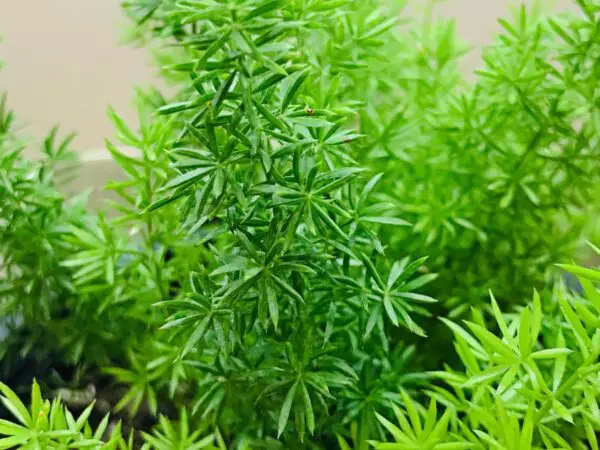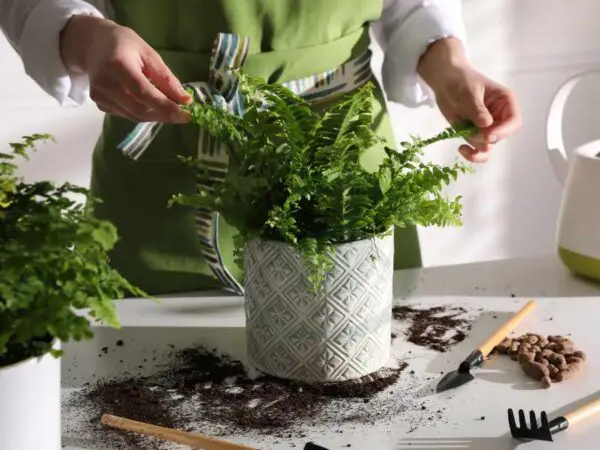Discover the secrets of propagating Boston ferns effortlessly. Unravel the historical significance behind this age-old practice of spore propagation and learn how to propagate these lush greens with ease, ideal for healthy indoor plants. Dive into the world of plant propagation and unlock the mysteries of nurturing Boston ferns from generation to generation.
Learn the art of Boston fern propagation, a tradition passed down through time, and elevate your indoor gardening skills. Follow our simple guide to propagate Boston ferns successfully and embrace the beauty of growing your own verdant oasis at home. Revolutionize your plant care routine by mastering the techniques of propagating Boston ferns like a pro.
Key Takeaways
- Understanding the needs of Boston ferns is crucial for successful propagation.
- Preparing the right tools and environment before propagation can improve the chances of success.
- Choose the most suitable propagation method based on the fern's condition and your preferences.
- Division propagation involves separating the plant into sections to create new plants.
- Spore propagation is a technique where spores are used to grow new ferns.
- Proper care and attention post-propagation are essential for the health and growth of new Boston ferns.
Understanding Boston Ferns
Growth Habits
Boston ferns feature lush, green fronds that can reach lengths of up to 3 feet, making them visually striking. These plants exhibit vigorous growth patterns and can quickly spread outwards when provided with the right conditions. They thrive in humid environments, making them perfect for indoor spaces where moisture levels can be controlled effectively.
Common Varieties
Various common varieties of Boston ferns exist, such as the 'Bostoniensis' and 'Fluffy Ruffles' types. Each variety may showcase slight differences in frond shape or coloration, adding diversity to your indoor garden collection. Understanding these different varieties enables you to select the most suitable one based on your space's characteristics.
Ideal Conditions
To ensure the optimal growth of Boston ferns, it is crucial to provide them with indirect light and maintain high humidity levels. Direct sunlight exposure should be avoided, along with drafts that can harm the plant's health. Consistently maintaining moisture in the soil is a key factor in supporting their overall health and development.
Preparing for Propagation
Best Timing
Propagating Boston ferns is best done during the plant's active growing season, typically in spring or early summer. Choosing this time ensures that new plants have ample time to establish before winter arrives. Avoid propagating during the plant's dormant phase for higher success rates.
Selecting Healthy Plants
Start propagation with healthy parent plants to ensure robust genes are passed on to the new offspring. Look for vibrant green fronds without discoloration or pests when selecting plants for propagation. Healthy parent plants increase the likelihood of producing thriving new ferns.
Tools and Materials
For propagating Boston ferns, gather tools like a sharp knife or garden shears for division purposes. Prepare materials such as moist compost, trays, and misting bottles to facilitate successful propagation. Having the necessary tools and materials ready can streamline and enhance the propagation process.
Propagation Methods Overview
Division
Division involves separating the rootball of Boston ferns into smaller sections, creating new plants. This method is simple and effective, achieved by gently dividing the plant with forks or a knife. By potting these new sections individually, mature Boston ferns can be propagated successfully.
Spore Collection
Spore collection is another propagation method where spores from the undersides of fern leaves are gathered. Wait for the spores to turn brown and crispy before placing them on moist compost for germination. Though slower, this method can be rewarding for propagating Boston ferns.
Root Division
Root division includes separating the root system of a Boston fern to generate new plants. By carefully prising apart or slicing through the rootball, individual plants can form effectively. This method is reliable for propagating healthy and thriving Boston ferns.
Division Propagation Steps
Separating Runners
Boston ferns produce runners that can be separated from the parent plant for propagation. These runners, which are long stems growing from the main plant, can be identified and cut to create new individual plants. This process allows for the growth of multiple Boston ferns in separate containers. Separating runners is a simple and effective way to expand your Boston fern collection with healthy new plants.
Root Dividing
Dividing the roots of a Boston fern involves splitting the rootball into smaller sections, each containing roots and fronds. By dividing the roots, you can rejuvenate overgrown plants and stimulate fresh growth. This method not only helps manage the size of the plant but also promotes overall health and vitality. Root dividing is essential for maintaining thriving Boston ferns in your indoor garden.
Repotting Divisions
After successfully dividing a Boston fern, it is crucial to repot the new sections into fresh soil to support their growth. When repotting divisions, ensure you choose pots that are appropriately sized with good drainage to prevent waterlogging. Repotting provides ample space for roots to spread out and access essential nutrients, enabling the new plants to establish themselves and thrive in their new environment.
Spore Propagation Technique
Collecting Spores
- Collecting spores from mature Boston fern leaves is a method of sexual reproduction.
- Spores are tiny structures containing genetic material for new fern plants.
- Proper collection and germination can lead to unique Boston fern offspring.
Germination Process
- The germination process involves creating a suitable growth environment.
- High humidity and consistent moisture are crucial for successful spore germination.
- Understanding this process ensures healthy development of new fern plants.
Transferring Seedlings
- Once spores have germinated into seedlings, carefully transfer them to individual pots.
- Handle the delicate seedlings with care to avoid root damage.
- Timely transfer promotes continued growth and development.
Root Division Method
Identifying Roots
Identifying healthy roots is crucial for successful Boston fern propagation through root division. Look for white, firm roots as they indicate vitality and readiness for separation. Proper root identification is key to ensuring the new plants thrive.
Cutting Techniques
Using sharp and clean cutting tools plays a vital role in precise and effective Boston fern propagation. Employ techniques like making clean cuts and avoiding jagged edges to minimize stress on the plants. Mastering cutting methods significantly boosts the success rate of propagation.
Planting Roots
Planting separated roots of Boston ferns involves gently burying them in moist soil. Ensure the roots are well-covered but not buried too deeply to aid growth. Proper planting of roots establishes a strong foundation for healthy and robust fern plants.
Care for New Plants
Watering Tips
Providing adequate water is crucial for the growth of propagated Boston ferns. Consistently water the plants to ensure proper hydration without causing root rot. Monitor soil moisture levels regularly and adjust watering frequency accordingly.
Light and Positioning
Placing propagated Boston ferns in indirect light fosters their growth without exposing them to direct sunlight. Ensure the plants are positioned in areas with consistent lighting to support their overall health. Proper light exposure and positioning are vital for the vibrancy of Boston ferns.
Temperature and Humidity
Maintaining optimal temperature and humidity levels is essential for the well-being of propagated Boston ferns. Keep the plants in environments with temperatures ranging between 60-75°F and ensure high humidity levels. Regulating temperature and humidity creates an ideal atmosphere for the growth of Boston ferns.
Troubleshooting Common Issues
Environmental Factors
When propagating Boston ferns, consider air circulation and temperature fluctuations. Protect plants from drafts to prevent stress. A stable environment is crucial for successful propagation.
Maintaining Health
Inspect propagated Boston ferns regularly for pests or diseases. Provide proper care through watering, fertilizing, and pruning to ensure plant health. This maintenance prolongs their beauty indoors.
Problem Solving
Address yellowing fronds or leaf drop promptly in propagated Boston ferns. Adjust watering, lighting, or humidity levels based on observed symptoms. Effective troubleshooting techniques support plant well-being.
Enhancing Growth Post-Propagation
Soil Recommendations
Propagated Boston ferns thrive in well-draining potting soil rich in organic matter, promoting root development. Opt for soils that are not compacted or heavy, allowing proper drainage. The right soil choice ensures essential nutrients and aeration for healthy fern growth.
Fertilizing Correctly
Balanced liquid fertilizer, diluted to half strength, is ideal for fertilizing propagated Boston ferns. Apply fertilizer during the growing season to support plant development effectively. Proper fertilization enhances nutrient uptake and contributes to the overall health of Boston ferns.
Pruning and Maintenance
Regular pruning of dead or yellowing fronds is crucial for maintaining the appearance and health of propagated Boston ferns. Removing damaged or diseased parts prevents issues from spreading. Consistent maintenance tasks are vital for ensuring the longevity and vitality of Boston ferns.
Closing Thoughts
Frequently Asked Questions
How do I understand Boston Ferns better?
To understand Boston Ferns, consider their origin, growth requirements, and unique characteristics. Research their ideal growing conditions, care tips, and common issues to anticipate. Understanding these aspects will help you provide the best care for your Boston Ferns.
How can I prepare for propagating a Boston Fern?
Prepare for propagating a Boston Fern by gathering necessary supplies such as pots, soil mix, and pruning shears. Ensure you have a suitable location with adequate light and humidity levels for successful propagation. Familiarize yourself with the chosen propagation method's steps beforehand.
What are the different methods of propagating a Boston Fern?
Boston Ferns can be propagated through division or spore techniques. Division involves separating the plant into smaller sections with roots, while spore propagation utilizes fern spores to grow new plants. Each method has its own requirements and steps for successful propagation.
What is the root division method of propagating a Boston Fern?
The root division method involves carefully dividing the Boston Fern's root ball into smaller sections using sharp tools. Each divided section should have healthy roots and fronds to ensure successful growth. This method allows you to create multiple new plants from a single parent plant.
How do I care for new plants after propagating a Boston Fern?
After propagating a Boston Fern, place the new plants in suitable containers with well-draining soil. Provide them with consistent moisture levels, indirect light, and proper humidity to support their growth. Regularly monitor the new plants for any signs of stress or issues that may arise post-propagation.
Image Source: Paid image from CANVA





